- News
- Reviews
- Bikes
- Components
- Bar tape & grips
- Bottom brackets
- Brake & gear cables
- Brake & STI levers
- Brake pads & spares
- Brakes
- Cassettes & freewheels
- Chains
- Chainsets & chainrings
- Derailleurs - front
- Derailleurs - rear
- Forks
- Gear levers & shifters
- Groupsets
- Handlebars & extensions
- Headsets
- Hubs
- Inner tubes
- Pedals
- Quick releases & skewers
- Saddles
- Seatposts
- Stems
- Wheels
- Tyres
- Tubeless valves
- Accessories
- Accessories - misc
- Computer mounts
- Bags
- Bar ends
- Bike bags & cases
- Bottle cages
- Bottles
- Cameras
- Car racks
- Child seats
- Computers
- Glasses
- GPS units
- Helmets
- Lights - front
- Lights - rear
- Lights - sets
- Locks
- Mirrors
- Mudguards
- Racks
- Pumps & CO2 inflators
- Puncture kits
- Reflectives
- Smart watches
- Stands and racks
- Trailers
- Clothing
- Health, fitness and nutrition
- Tools and workshop
- Miscellaneous
- Buyers Guides
- Features
- Forum
- Recommends
- Podcast
TECH NEWS
 Specialized Evade-1.jpg
Specialized Evade-1.jpgNew Specialized S-Works 7 shoes and Evade aero helmet - Unboxing Video + First Ride
Specialized has today launched a new Evade aero helmet and S-Works 7 shoes. The shoes are stiffer with new Boa S3 dials; the helmet is lighter, more aero and better ventilated. Let’s dive into all the details.
S-Works 7 shoes - stiffer and more comfort
I was very impressed with the S-Works 6 shoes I reviewed back in 2016. In fact, I’m still wearing them on a regular basis, they’re always near the top of the shoe pile despite testing lots of newer shoes since. I just love their comfort, low weight and high stiffness.
The new S-Works 7 have been substantially updated, but it's clearly a case of evolution rather than revolution, so in some ways, they are very similar. The changes are a response to feedback both from its sponsored pro athletes and customers for more stiffness and comfort respectively. It has increased stiffness without adding weight and sought to improve comfort in a number of ways.
The most noticeable change is a visual one and attributed to the new Boa S3 dials. Exclusive to the Big S, they are CNC-machined aluminium and designed to be more durable and robust than the previous Boa dials, as well as being nicer to use.
The dials are now bonded to the upper to reduce stitching. Reduced stitching has been a key design focus of the new shoes in fact, and the entire upper is now a one-piece construction using Dyneema Mesh. The Padlock heel cup, which successfully eliminated heel lift and provided a very secure fit in the previous generation S-Works shoes, has been tweaked in shape and flexibility to provide a little more comfort.
- 17 of the best performance road cycling shoes
If there was a complaint with the previous shoe, it was that the volume was on the low side with quite a foot-hugging shape. I personally never found it an issue, but I know some people did. To improve the comfort Specialized has increased the volume in the midsection and around the front of the shoe. The tongue is now padded as well, and the opening is offset and zigzagged. The two Boa dials are also angled, all in the pursuit of better spreading pressure across the top of the foot to really improve the comfort factor.
There's more comfort, there's also more stiffness. The “Stiffness Index” (the company’s measurement for sole stiffness) has increased from 13 to 15 for the new shoes, and while it’s not clear how that figure is determined - there’s no industry standard for shoe stiffness as of yet - it’s certainly more than the old shoes.
What's impressive is that the extra stiffness isn’t due to more carbon and therefore increased weight. Specialized has moved carbon from where it’s not needed to where it is needed, so it's using the same amount of carbon but it's used strategically. And how did it know where to shuffle the carbon? Pressure mapping studies, that’s how. So same weight (224g 1/2 pair, Size 42) but more stiffness.
Elsewhere, there's the same 3-bolt cleat drilling as before, with titanium inserts, lots of fore-aft adjustment and handy alignment markings. There’s a slim rubber padding at the front and a replaceable heel tread for slightly easier walking.
All the tried-and-tested Body Geometry tech lives on, first developed over a decade ago, and a reason why Specialized shoes are so popular with all sorts of cyclists. To recap, BG involves specially shaped insoles that provide longitudinal arch support, a varus wedge angle the forefoot and a metatarsal button, with various degrees of support depending on your personal requirements.
What is new is custom mouldable insoles, a £110 option that takes about 30 minutes of measuring, prodding and stroking of your feet… Watch the video below to see what’s involved as I go through the process.
Retul Match
To get fitted for the right size shoes and mould some bespoke soles requires the brand new Retul Match. This is a new facility being rolled out to stores across the country and is intended to make it easier to match you to the correct shoe, saddle or bike frame size using digital measuring devices.
It’s based on the same technology as featured in the full fat Retul bike fit measuring system you might have come across if you've ever been for a bike fit. Retul was bought by Specialized a few years ago and Match is a new service intended to offer a lower cost, more accessible and quicker fitting solution for people that might not want or need a full bike fit service.
On an aside, Specialized has been incorporating Retul and all its data into its development of new products of late, using that huge database to better deliver perfectly fitting products. The best example is the new Tarmac SL6, which was developed using this Retul data and resulted in a gender-neutral approach to sizing and geometry.
- Review: Specialized S-Works Tarmac SL6
Retul Match is designed for the 93% of people that don’t bother with a full bike fit service. It can be used to determine saddle height to get you on the right size bike or fit you to the right shoes or saddle.
I went through the process to get the right size S-Works 7 shoes while I was visiting Specialized UK HQ recently. It’s sort of like a really clever version of the Brannock foot measuring devices you had when you were fitted for school shoes, but Retul Match will suggest the best shoe model for you, as well as the size and inner sole selection.
You start off by prodding a large touchscreen television housed inside a kiosk, answering a few simple questions to determine the sort of cyclist you are (gender, the frequency of rides etc) before the fitter uses the Retul Zin Wand to take key measurements, in my case my feet using the Digital Foot Device. This data is gathered by Retul Match and is used to suggest the shoe size and arch support you need.
It’s simple and quick and helps to take away some of the confusion and mystery about getting the right size shoes and insole fit, using data to determine the right product rather than guesswork. For the majority of people, I can see that it’s going to be a big help.
When it comes to inner soles, most people will be well served by the wide range of insoles the company offers that cater for different arch heights. If however, you have specific requirements, Specialized is now offering custom mouldable insoles. There are a few companies that have been doing custom insoles for a few years now and it’s interesting to see Specialized getting involved. The soles cost £110 and the whole process takes about 30 minutes and essentially involves taking a cast of your foot using a special machine and heating up special inner soles to mould using this cast.
I've had a pair of custom inner soles made up, that's them above, and I've kept the stock inner soles and will compare them in my review of the new S-Works 7 shoes.
The S-Works 7 shoes are available now and cost £330, come in sizes 36 to 49 including half sizes and a choice of five colours.
Evade aero helmet - better ventilation and more aerodynamic
Aero helmets have become all the rage since they first started appearing on the heads of pro cyclists about four or five years ago, and since then we’ve witnessed a real explosion in the available choice. It's fair to say they've become popular with lots of cyclists interested in finding extra speed.
Pretty much every helmet brand now offers an aero road helmet and most are on their second generation designs, given how aero understanding has advanced rapidly in a few short years.
The Evade was one of the first of that original crop, first worn by none other than Mark Cavendish at Milan-San Remo in 2013 before being launched at the Tour de France later that year. Go back even further though and who remembers the plastic cover that Cav wore over his Specialized Prevail at the 2011 world champs? That’s the moment the aero road helmet craze started in earnest.
- Should you buy an aero helmet?
The Evade has been a popular choice in the aero helmet market. It wasn't the prettiest of helmets (are any aero helmets?), but there is no disputing its popularity and aero performance if the company's claims are to be believed. Specialized now has its own wind-tunnel (it calls it the Win Tunnel no less) and used this facility to develop a replacement that is more aerodynamic, better ventilated, lighter and better looking than the previous version.
Venting is tricky with an aero helmet. More holes are generally going to mean better ventilation but at the cost of increased drag, it's a tricky balance to get right. The Evade made a good attempt at balance aero and ventilation, but it wouldn't be your first choice for a hot day in the mountains.
The newly designed Evade, thanks to a complete redesign using heat sensors, is claimed to produce a 1.5% cooler head than the original. So marginally less sweaty when the going gets hot and it provides a larger operating window for pros and amateurs alike to wear the Evade over the better vented Prevail or other vented helmet of your choice on warmer days.
The improved cooling effect comes from revised vent sizes and shapes and deep internal channels that do a better job of pulling in cooling air and directing it to where it’s needed. Specialized also claims the new Evade is as cool as not wearing a helmet at all.
It has managed to improve the cooling whilst also improving the aerodynamic properties. It’s claiming it is 6 seconds faster than the original Evade. Specialized doesn’t give much more detailed aero data than that. As with all aero claims, we have to take them at face value.
A change you can see with your own eyes is the new shape. It's not that far removed from the original, but it is more compact, lower on the head and shorter, that distinctive long tail has been snipped down by 2.5cm. It's a much better-looking helmet in my opinion.
It’s also 16-20g lighter as well but weight has never been the main appeal of an aerodynamic helmet, but every little helps. This size medium helmet pictured here weighs 254g, compared to 201g for a Prevail II.
Here's the inside of the helmet, where you can see the new deep channels for improving the ventilation. The inside of the helmet is lined with Drylite pads and the minimal Mindset retention system allows a wide degree of adjustment as well as accommodating pony tails and long hair better than the previous helmet.
- 16 of the best high-performance helmets that combine light weight, aerodynamics and comfort
The thin webbing straps and Tri-Fix splitter are the same as the Prevail II that I recently tested, but it’s introduced a new magnetic buckle that saves a bit of weight and is intended to be easier to use.
The Evade costs £200 and comes in three sizes and five colours.
First ride impressions
About a week ago I visited Specialized UK to take a first look at the new shoes and helmet, and go through the fitting process for the shoes including seeing the new Retul Match for the first time.
And since returning I’ve had a few days to wear the new shoes and helmets on my daily rides. While this is by no means an in-depth review, first impressions of both are encouraging. I’ll post a full review in a few weeks once I’ve really logged a lot of miles in them both.
I’ll start with the S-Works 7 shoes. It's no secret that I was really impressed with the previous S-Works 6 shoes, but the new S-Works 7 shoes offer a bit more all-round excellence, without losing any of the goodness of the previous shoes.
The first and most noticeable improvement is just how nice the new metal Boa dials are to use. It’s a lot more satisfying to turn these dials compared to the old plastic ones, more tactile and ergonomic with a satisfying feedback and a quieter sound. I’ve got a real penchant for quality dials, whether it’s in a car or on a stereo, and these make me happy. Sad as that might sound!
The revised upper around the midsection of the foot, with the offset and angle opening, delivers a noticeable improvement in comfort across the top of the foot. There’s a nicer spread of pressure over the foot. It’s a small change but quite noticeable, especially going from the old shoes to the new ones. It’s also much easier to get the tongue to sit in the correct position and not slide to the side as with the previous shoes. I like that the tongue is padded too. Getting in and out of the shoes is also easier, no unhooking of the top Boa dial cord needed with these new shoes.
There’s no loss of that secure locked into the shoe feeling with the revised heel cup. There’s a little extra volume around the front of the foot as well which is no bad thing. And I’ve got customised insoles. They feel very different to the regular insoles with a lot more arch support. Initially, they feel strange but after a couple of rides I’ve got used to them, and comfort and performance feel really good.
Can I detect that extra stiffness? I can't say I noticed it straight away. The old shoes were very stiff, and these feel very stiff. No, what I'm most immediately noticing about these new shoes is the improved fit and comfort.
And now the new Evade helmet. The first thing you notice is the new compact shape and smoother lines. It's less alien looking and much nicer for it. It's shorter and, I reckon, less polarising than the previous Evade. Aero helmets aren’t generally the best looking products but Specialized has done a nice job here I reckon. Aerodynamics are why these helmets look the way they do.
Slipping it out of its box and onto my head and the first thing I noticed is how similar to the Prevail II it feels. The retention system provides a good fit and it’s a doddle to adjust it for the size of my head as well as vertical adjustment. The small dial at the back is easy to use with one hand while you’re riding. It’s lighter than the old Evade, not as light as the Prevail, but it feels light on the head. It's a very comfortable helmet.
- Should you buy an aero helmet?
Bitterly cold conditions at the time of writing make it tricky to assess the venting performance since I haven’t been on a ride without some sort of hat or skull cap in months. I’ve certainly not noticed any overheating on faster and higher intensity rides compared to normally vented helmets I usually wear. What I have noticed is that it actually feels a little warmer than my other vented helmet, which is no great surprise given its design.
As for aero performance, that’s a tricky one to test, but I’ll try and simulate Dave Atkinson’s real-world aero testing when the weather warms up. So, for now, we’ll have to take Specialized’s aero claims at face value. One thing I did notice is that it’s a very quiet helmet, there’s no wind noise at high speed compared to some helmets.
So tuned for full reviews soon...
David worked on the road.cc tech team from 2012-2020. Previously he was editor of Bikemagic.com and before that staff writer at RCUK. He's a seasoned cyclist of all disciplines, from road to mountain biking, touring to cyclo-cross, he only wishes he had time to ride them all. He's mildly competitive, though he'll never admit it, and is a frequent road racer but is too lazy to do really well. He currently resides in the Cotswolds, and you can now find him over on his own YouTube channel David Arthur - Just Ride Bikes.
Latest Comments
- Rendel Harris 3 min 37 sec ago
Well I'm "woke", apparently and I certainly like a drink, but Russia has been a nation of topers since time immemorial, travellers in the 16th...
- Rendel Harris 8 min ago
Ah, interesting. One would've thought it's not beyond the bounds of possibility to create some sort of U-bend or one-way valve fixture that could...
- chrisonabike 1 sec ago
It might, if they stopped driving....
- HLaB 30 min 17 sec ago
That's more than double my car mileage but I'm kinda in the same boat, but I don't feel jealous of folk I'd rather have the freedom to spend my...
- quiff 40 min 8 sec ago
The intent is interesting - you might argue that the intent is deterrent and you never intend anyone to actually come into contact with the gas - a...
- howyaBen 57 min 34 sec ago
I like the measure of effectiveness of the new Hutch tires, % of wattage improvement. Instead of saying, "28.6 watts at 49.34 km per mile a nano...
- David9694 57 min 52 sec ago
Random driver account: "cyclists should be made to wear hi viz like workers do on a building site"....
- quiff 1 hour 10 min ago
"The algorithm" served me an older JV video last week which I now can't get out of my head....
- quiff 3 hours 27 min ago
Holy thread resurrection Batman!
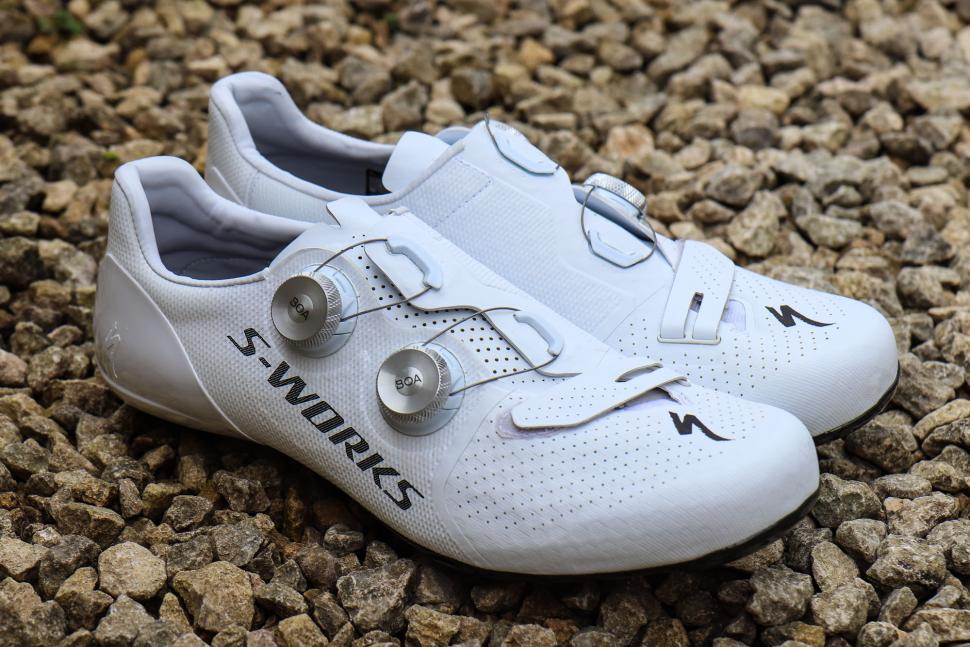


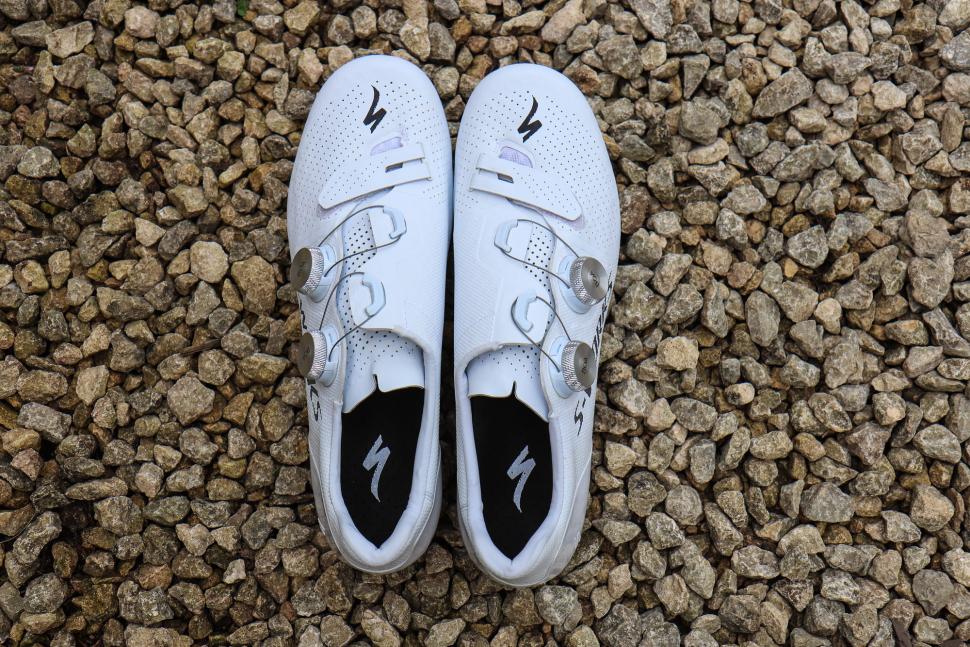


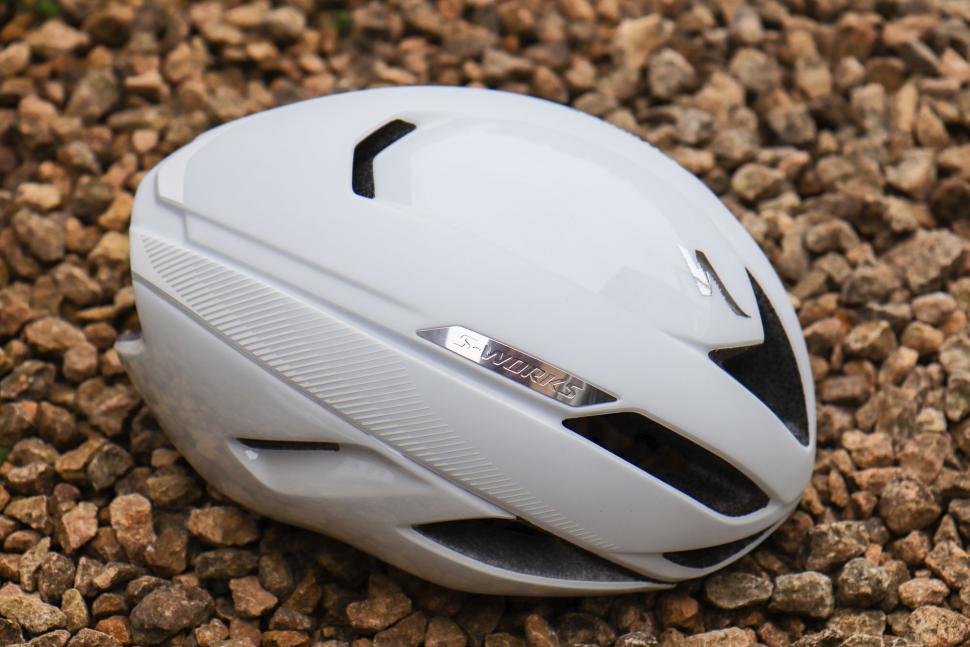
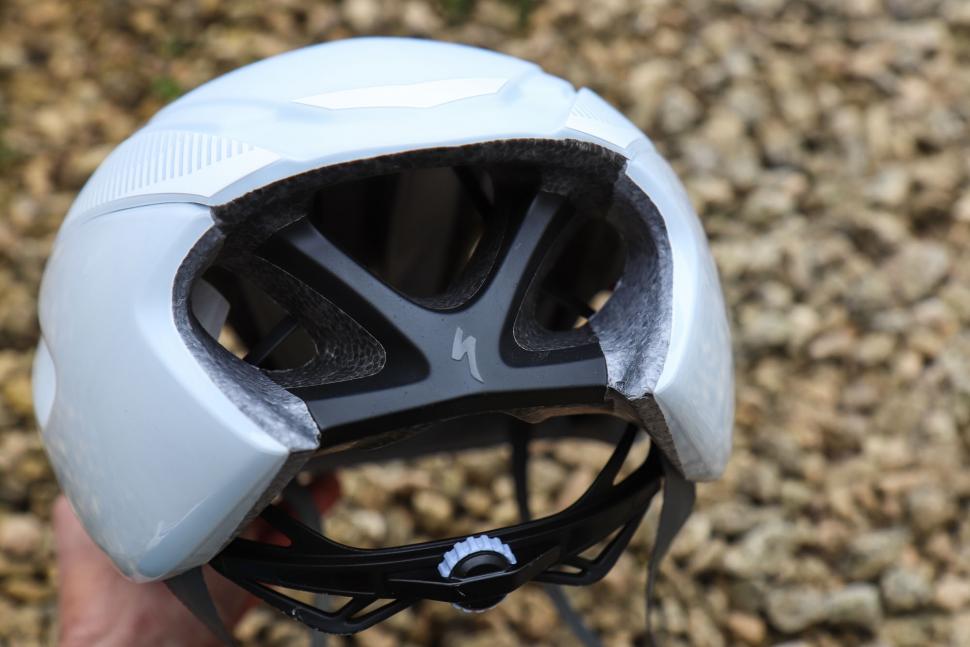
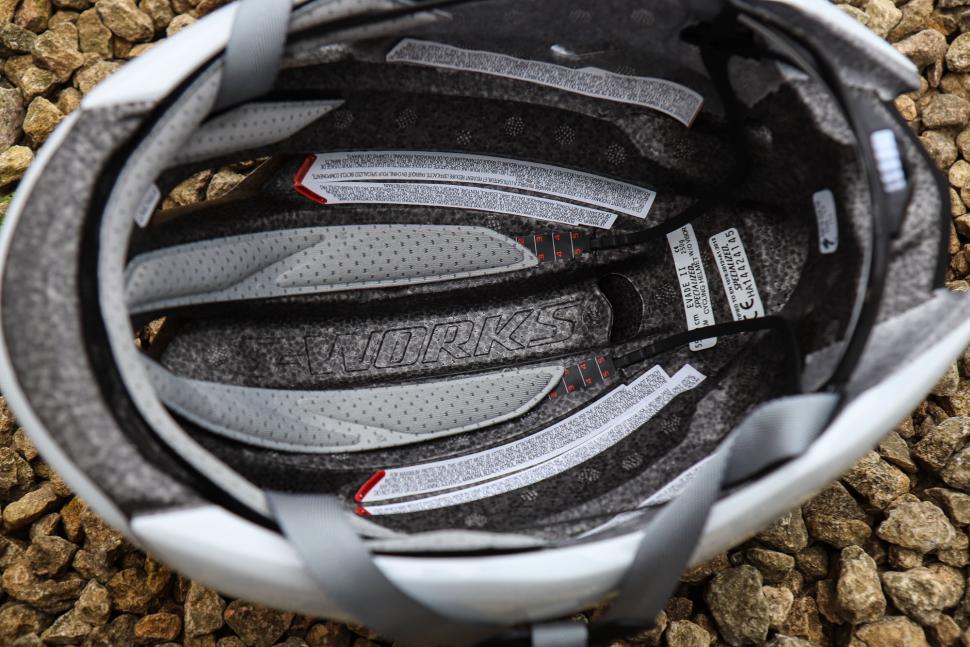
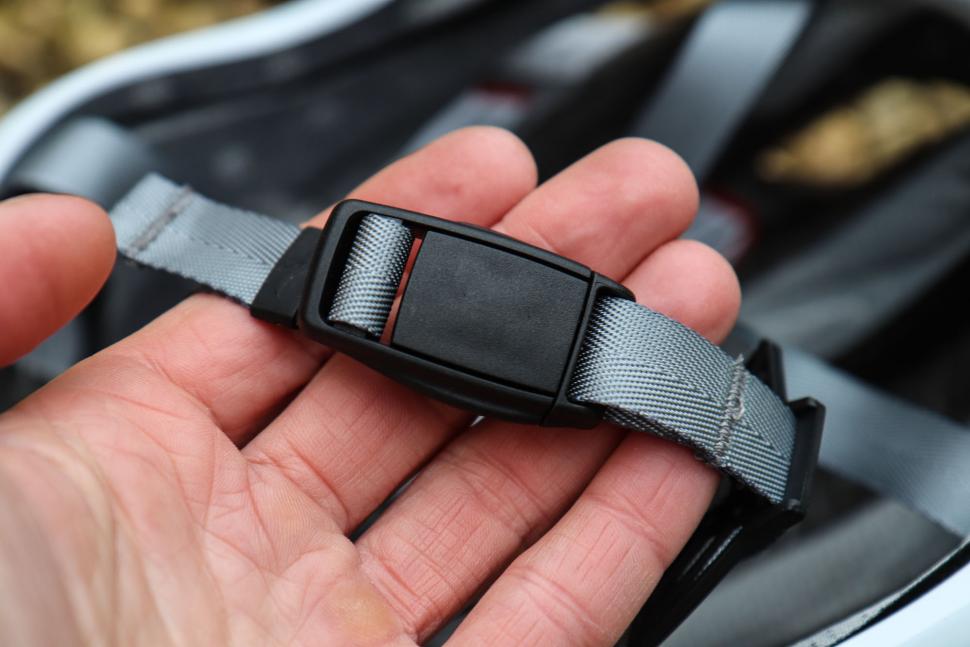
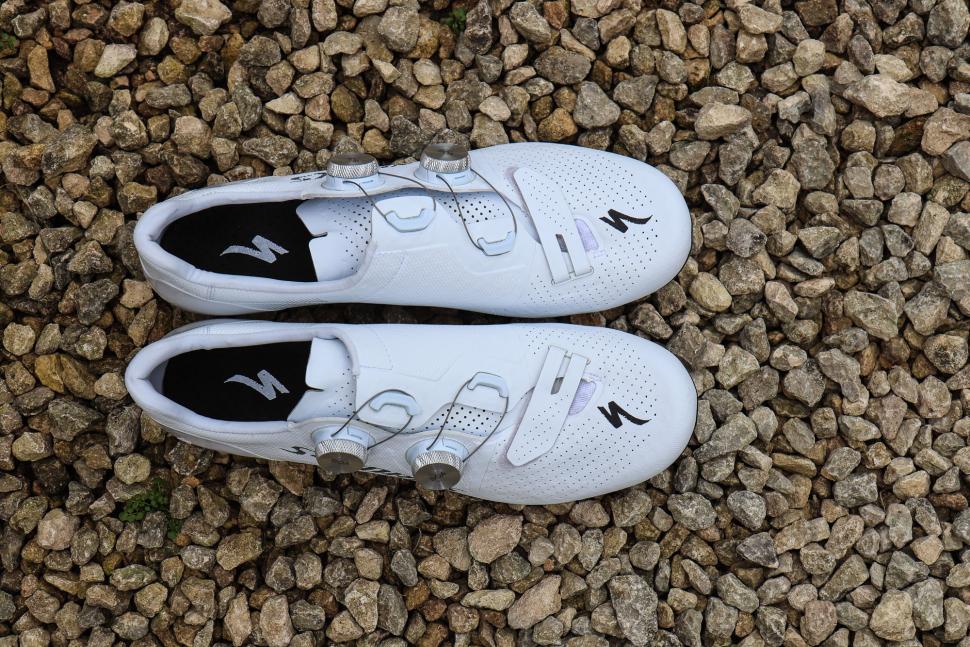
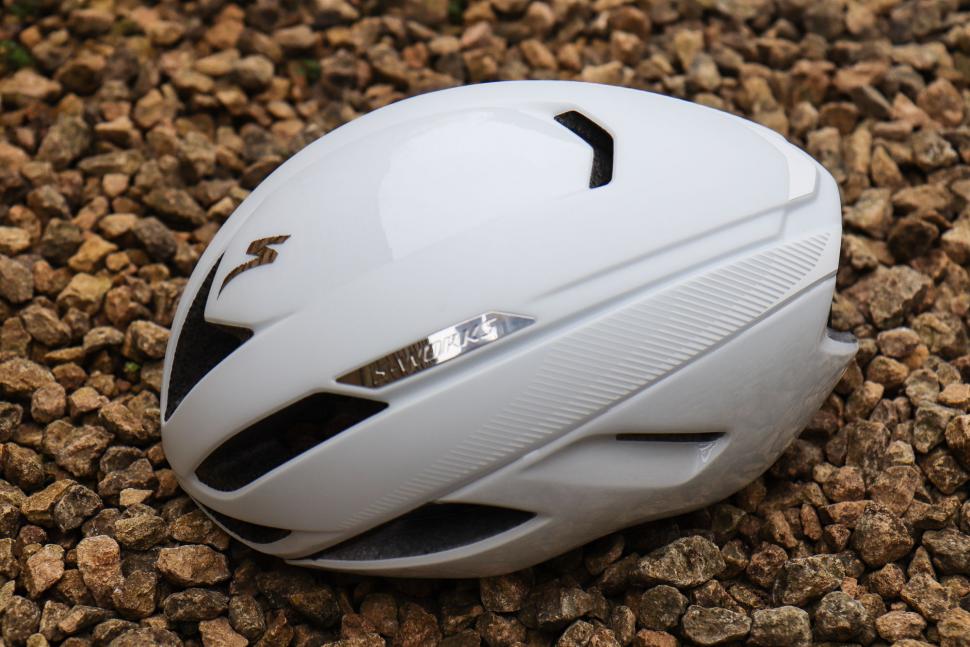
Add new comment
4 comments
The shoes are on my next buy list!
I really like the look of the dyneema mesh the shoes are made of, it's a really cool product, essentially the same stuff they make power kite lines from
I don’t really get the logic of bike companies: they hide all cables for the aero benefits- and remove front derailier, but then add 4 huge alu boa dials on the side of shoes. Why?
I'm quite excited about the new Evade.. specialized helmets seem to fit my bonce well. New shoes are so pretty but posh shoes are sooo expensive.